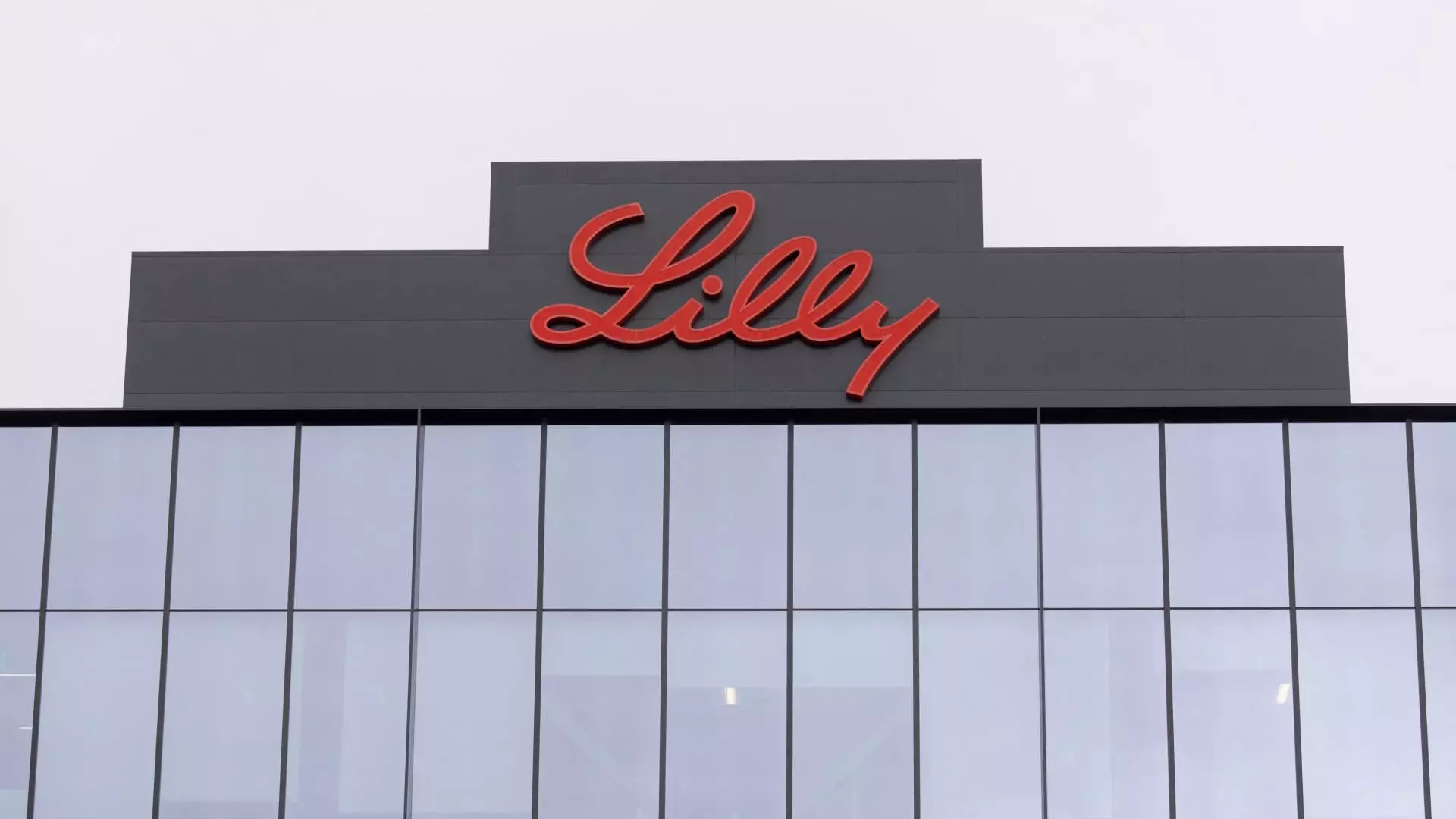Eli Lilly’s recent financial report for the third quarter serves as a sobering insight into the complexities of the pharmaceutical market, particularly concerning its prominent weight-loss drug, Zepbound, and diabetes treatment Mounjaro. Falling short of profit and revenue expectations, the company’s struggles signal potential implications for its future as well as for competitors such as Novo Nordisk. The report highlights not only the repercussions of disappointing sales but also broader trends that could reshape the landscape of pharmaceutical investments.
On the surface, Eli Lilly’s third-quarter performance was disappointing. The company recorded adjusted earnings of $1.18 per share, falling short of the anticipated $1.47. Revenue also lagged behind forecasts, coming in at $11.44 billion while analysts expected it to reach $12.11 billion. The immediate market reaction was stark: Eli Lilly’s stock plummeted more than 12% in morning trading, illustrating the financial community’s acute sensitivity to the company’s performance. In contrast, shares of its key rival, Novo Nordisk, saw a smaller decline of over 3%, hinting that even the broader market views Eli Lilly’s situation as a potential bellwether for the sector.
The company’s altered full-year guidance has further compounded investor unease. Eli Lilly now projects adjusted earnings to fall between $13.02 and $13.52 per share, a significant downward revision from the prior estimate of $16.10 to $16.60. Such adjustments are seldom taken lightly in the financial world, and corporate communications regarding the rationale behind these shifts could be pivotal in re-establishing investor confidence.
Both Zepbound and Mounjaro, heralded as transformative drugs in their respective markets, showcased uninspiring sales figures in the third quarter. Zepbound generated $1.26 billion, far below the $1.76 billion projected by analysts. Meanwhile, while Mounjaro’s revenue of $3.11 billion marked considerable year-over-year growth, it still fell short of the anticipated $3.77 billion. The disparity between expected and actual sales raises crucial questions about market demand versus production capabilities, a theme that recurs across Eli Lilly’s recent statements.
Despite claims of easing supply issues, CEO David Ricks pointed out that decreased inventory among wholesalers has negatively impacted sales, suggesting ongoing challenges in effectively translating production capacity into market availability. As the regulatory landscape around these drugs continues to evolve—with the FDA recently ending tirzepatide’s shortage status—Eli Lilly will need to balance the complex dynamics of supply management and marketing strategy to stabilize sales.
Beyond the immediate financial implications, Eli Lilly’s commentary on increased manufacturing capacity provides insight into its long-term vision. The company anticipates a 50% increase in production of incretin drugs in the second half of 2024 compared to the same period in the last year, alongside even greater expansions projected through 2025. However, the history of unmet demand and continued production constraints still looms large.
Ricks has also hinted at the company’s cautious approach to advertising and promotion strategies for Zepbound, noting that customer service levels had initially deterred aggressive marketing efforts. This hesitance reflects a broader understanding that patient trust and satisfaction in product availability could outweigh the mouthpiece of promotion. As the company prepares to roll out promotional plans by November, the effectiveness of this strategy will be critical in overcoming barriers created by customers’ frustrations over availability.
Eli Lilly’s current challenges also resonate within the competitive landscape. The ongoing push against unauthorized alternatives by compounding pharmacies complicates the market for branded drugs like those produced by Eli Lilly and Novo Nordisk. Faced with the dual pressures of ensuring the availability of FDA-approved products while managing competitive threats, Eli Lilly must navigate a complex web of industry dynamics.
Moving forward, Eli Lilly’s ability to recover lost ground will depend heavily on operational efficiency and marketing effectiveness. The fourth quarter will be crucial in determining whether the company can maintain favorable consumer and investor sentiments amidst an evolving pharmaceutical marketplace. The implications of this quarter’s report extend far beyond Eli Lilly alone; they spotlight the vulnerabilities that can ripple through the pharmaceutical industry in times of uncertainty. As the landscape continues to shift, industry players will need to recalibrate expectations and strategies to thrive amid these challenges.
Eli Lilly’s third-quarter performance is a multi-faceted narrative of challenges faced not just by a single company but reflective of ongoing industry-wide complexities that demand agility and foresight.


Leave a Reply